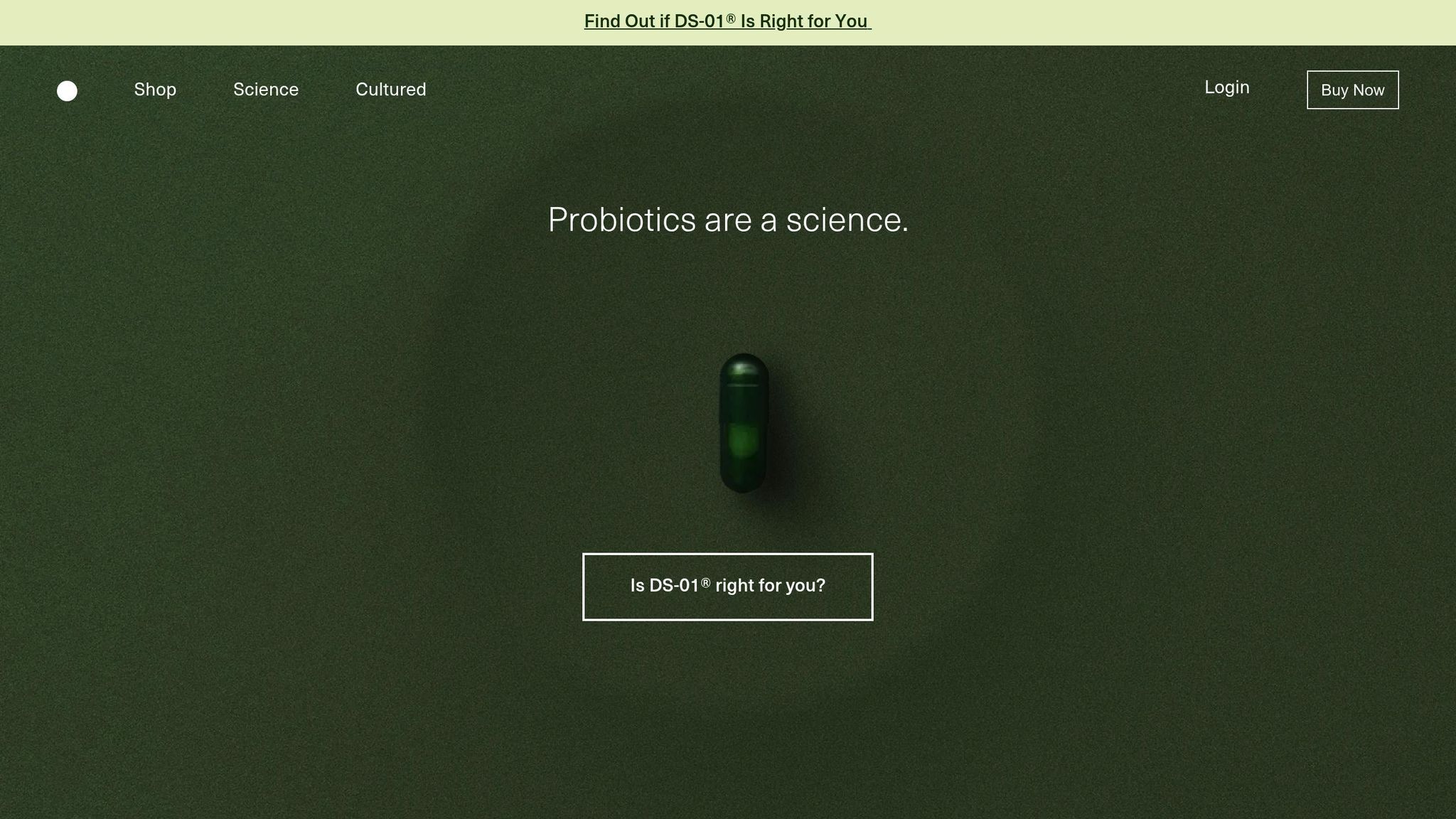- Preserving Live Microorganisms: Packaging must protect probiotics, synbiotics, and eubiotics from moisture, oxygen, and temperature changes to maintain their effectiveness. Systems like Lyosublime™ and products like Begin Rebirth's RE-1™ achieve this without refrigeration.
- Eco-Friendly Materials: The industry is shifting to plant-based polymers and natural encapsulation methods to reduce environmental impact while ensuring product stability. These materials are biodegradable and safe.
- Advanced Recycling: Improved recycling technologies, like chemical recycling and material recovery systems, are enabling better reuse of packaging materials, aligning with sustainability goals.
Quick Overview
- Key Needs: Moisture barriers, oxygen control, temperature stability.
- Sustainable Solutions: Plant-based materials, biodegradable polymers.
- Innovations: Lipid coatings, microencapsulation, and non-refrigerated packaging.
The future of biotic packaging balances protecting sensitive ingredients with reducing waste, ensuring both health benefits and environmental responsibility.
This is a Revolutionary Packaging Design: SEED Probiotics ...

New Materials in Biotic Packaging
Biotic packaging now uses cutting-edge materials designed to protect product effectiveness while addressing sustainability concerns. Let’s dive into some of these material advancements.
Plant-Based Polymers
These polymers are made from plants and provide a biodegradable option that safeguards sensitive ingredients while reducing waste.
Natural Encapsulation Methods
Encapsulation techniques have improved to maintain the strength of biotic ingredients during packaging and absorption. A great example is the Lyosublime™ delivery system, which ensures quicker absorption in the gastrointestinal tract while keeping microbes alive.
Key highlights include:
- Lipid coating: Shields probiotics from stomach acids, digestive enzymes, and bile salts.
- Microencapsulation: Helps maintain the viability of beneficial bacteria.
Protection Against Moisture and Oxygen
To keep products stable, advanced barrier technologies block moisture and oxygen. These systems allow live microorganisms to remain effective without refrigeration. Researchers are continuously refining these barriers to balance performance with eco-friendly goals.
sbb-itb-1bbfe7f
Green Packaging Progress
The shift toward eco-friendly packaging is gaining momentum, thanks to advancements in recycling technologies. These developments are shaping the future of biotic packaging by addressing both environmental concerns and market demands. Below, we explore notable recycling breakthroughs and their impact.
Recycling and Material Reuse
New systems are transforming how used packaging is collected, processed, and reused. Key areas of progress include:
- Material Recovery: Improved sorting technologies now separate different types of biopolymers more efficiently.
- Chemical Recycling: Advanced processes break down complex materials into their basic components for reuse.
- Quality Preservation: Techniques are being developed to maintain material quality throughout the recycling process.
Impact on Planet and People
Eco-friendly packaging helps cut carbon emissions, reduce non-biodegradable waste, and lower energy consumption. At the same time, the industry is ensuring that these sustainable options still protect sensitive biotic ingredients, thanks to advanced barrier technologies.
Consumers are responding positively to these efforts, showing a strong preference for packaging that aligns with environmental values. This shift is encouraging manufacturers to continue prioritizing sustainability while delivering reliable products.
Production and Growth Potential
The manufacturing of biotic packaging materials is changing fast, driven by new technology and the growing push for eco-friendly solutions. Companies are scaling production while maintaining high standards through advanced methods.
Manufacturing Efficiency
Modern facilities use precise temperature and pH controls, along with over 50 quality assurance and control checkpoints, to maintain bacterial viability. By shifting to plant-based cultivation and removing the need for meat and dairy media, production has become more cost-effective and environmentally friendly without sacrificing quality.
Strict adherence to GMP and HACCP protocols ensures consistent quality from batch to batch. Facilities like those producing Begin Rebirth RE-1™ follow rigorous lot-to-lot testing under both US and EU standards, ensuring reliability at every step. These advancements are paving the way for the next generation of packaging solutions.
Next-Gen Packaging Features
With these manufacturing improvements, next-generation packaging incorporates advanced delivery systems to maintain the effectiveness of biotic materials.
Microencapsulation Technology
Specialized lipid coatings offer:
- Protection from stomach acids
- Defense against digestive enzymes
- Resistance to bile salts
- No need for refrigeration
Enhanced Delivery Systems
The Lyosublime™ system highlights how packaging innovations can improve product performance by enabling faster absorption in the gastrointestinal tract. These advancements continue to raise the bar for biotic packaging, ensuring product quality and addressing environmental concerns.
Looking Ahead
Advanced systems like Lyosublime™ show that preserving products without refrigeration can reshape industry standards, especially in biotic packaging materials.
Packaging faces a dual challenge: addressing environmental concerns while ensuring product stability. Over the past century, about 50% of the human gut microbiome has been lost. This calls for materials that avoid harmful substances like BPAs and can maintain the viability of beneficial strains.
To meet these demands, developments such as specialized lipid coatings - designed to shield against stomach acids and digestive enzymes - represent just the beginning of advancements in biotic packaging.
Research also highlights that 80% of urban populations lack access to essential Human Origin Strains. As urbanization grows, packaging must adapt to support both individual health and environmental well-being. Future innovations will aim to safeguard our gut microbiome while reducing harm to the planet.

